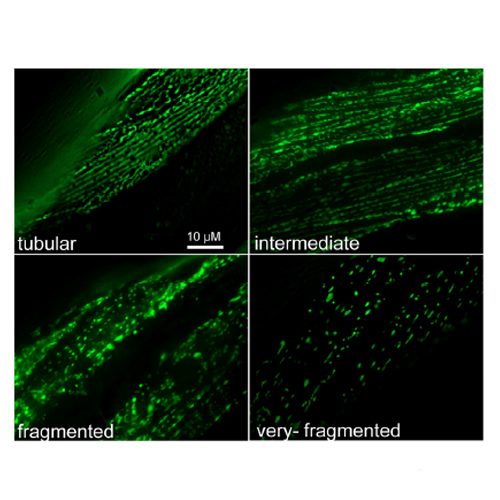Age-dependent changes in mitochondrial morphology and volume are not predictors of lifespan
16-Feb-2014
AGING, Vol 6, No 2 , pp 118-130
Mitochondrial dysfunction is a hallmark of skeletal muscle degeneration during aging. One mechanism through which mitochondrial dysfunction can be caused is through changes in mitochondrial morphology. To determine the role of mitochondrial morphology changes in age-dependent mitochondrial dysfunction, we studied mitochondrial morphology in body wall muscles of the nematodeC. elegans. We found that in this tissue, animals display a tubular mitochondrial network, which fragments with increasing age. This fragmentation is accompanied by a decrease in mitochondrial volume. Mitochondrial fragmentation and volume loss occur faster under conditions that shorten lifespan and occur slower under conditions that increase lifespan. However, neither mitochondrial morphology nor mitochondrial volume of five- and seven-day old wild-type animals can be used to predict individual lifespan. Our results indicate that while mitochondria in body wall muscles undergo age-dependent fragmentation and a loss in volume, these changes are not the cause of aging but rather a consequence of the aging process.











